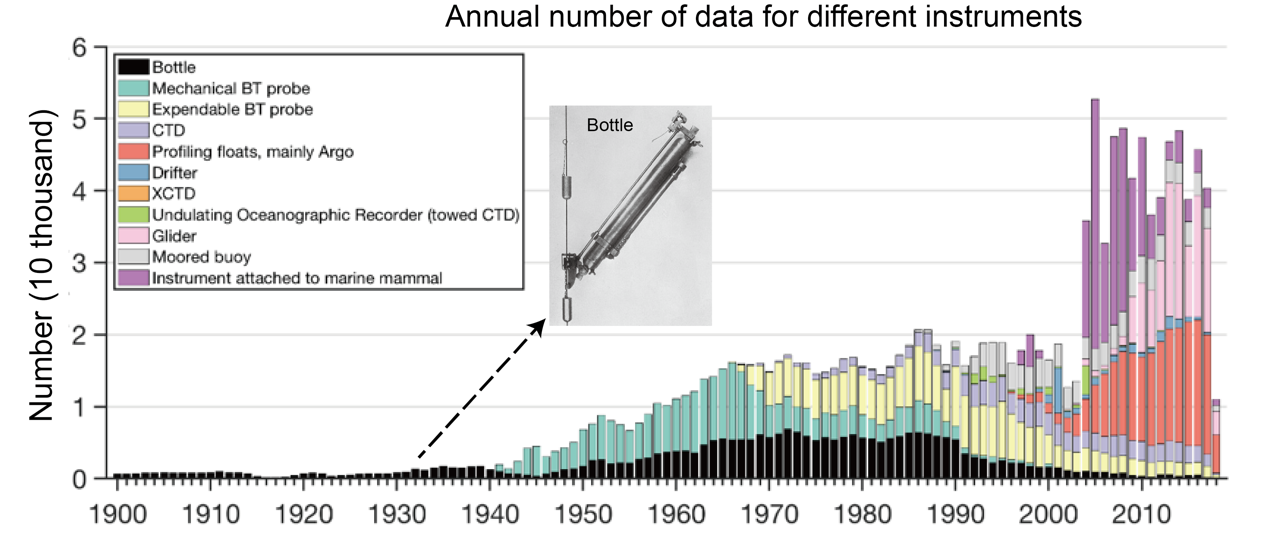In the 20th century, oceanographers mainly used two different ocean-water samplers to determine the essential physical properties of seawater: Nansen bottle, devised late in the 19th century by the Norwegian oceanographer Fridtjof Nansen, is made of metal with thermometers attached to record the temperature and pressure of the sample site; and CTD--an acronym for conductivity, temperature, and depth--is the electronic temperature profilers.
Annual number of ocean profile observations for different instruments. (Image by CHENG Lijing)
Between about 1970 and 1990, a big number of profiles obtained by these two techniques were available and used as the reference data in numerous studies. Though on general a high degree of consistency between the Nansen cast and CTD data was confirmed, a systematic sample depth overestimation was detected for Nansen cast temperature profiles. Until recently no systematic study was undertaken to prove the consistency of Nansen cast and CTD data.
In a recently published paper in the
Journal of Atmospheric and Oceanic Technology (JOAT), CHENG Lijing and Viktor GOURETSKI from the CAS Institute of Atmospheric Physics and Tim BOYER from the NOAA National Center for Environmental Information for the first time describe the results of the global inter-comparison between the collocated Nansen cast and CTD temperature profiles.
The origin of this depth bias is related to the method of sample depth estimation. Whereas for CTD profiles sample depth is estimated from the high precision pressure sensor, the sample depth for a considerable part of Nansen cast profiles is given by the length of the wire put out.
"The shape of the wire in the water is not known and the wire usually deviates from the vertical position, so that temperature is actually measured at a shallower level compared to the target sample depth. " Viktor GOURETSKI said.
Correcting Nansen cast sample depth has a significant impact on the estimates of the warming rate of the World Ocean. According to their calculation, the ocean warming rate increased from 0.20 ± 0.05 Wm-2 to 0.28 ± 0.06 Wm-2. "That's increase by 40% percent between 1955 and 1990." Said CHENG Lijing Cheng.
Scientists hope this correction method can help achieve better understanding of ocean warming.
This study is supported by Strategic Priority Research Program of the Chinese Academy of Sciences (XDB42040402), Youth Innovation Promotion Association, CAS (2020-077), and the National Natural Science Foundation of China (42076202, 42122046).
References
Gouretski, V., L. Cheng, T. Boyer, 2022: On the Consistency of the Bottle and CTD Profile Data. J. Atmos. Oceanic Technol., https://doi.org/10.1175/JTECH-D-22-0004.1. in press.
Media contact: Ms. LIN Zheng, jennylin@mail.iap.ac.cn

